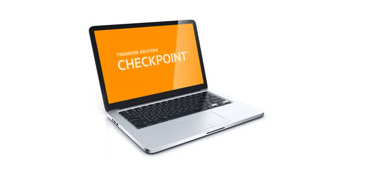Learn about fixed lease payments, payments related to renewal or termination options, variable payments based on an index or rate, and more.
Jump to:
Determining lease payments is a critical step for anyone considering leasing a vehicle, property, or equipment. Under the ASC 842 lease standard, almost all leases are recorded on the balance sheet. The question is, at which amount do you record the lease liability?
A couple of factors impact the amount of the liability – the lease term and the lease payment. Let’s take a look at lease payments specifically.
In order to record the lease liability on the balance sheet, we need to determine the lease term and the lease payment. We also need to know the rate that will be used to discount the lease liability.
What do lease payments include?
Lease payments include the following:
- Fixed payments: Fixed payments are easy to determine – just look at the contract.
- Payments related to renewal or termination options: Determine whether the lessee is reasonably certain to exercise a renewal or termination option and if so, include the amount of the option in the lease payment.
- Variable payments that are based on an index or rate (for e.g., CPI, LIBOR, etc.): How are these variable payments treated?
First, you would use the spot rate at lease commencement. But what happens as the rate changes? Would the amount of the asset or liability be adjusted, based on changes in the rate? The answer is no. The asset or liability is not adjusted for increases in the variable
payment based on an index—the liability is calculated using the spot rate at lease commencement and any increase is treated as variable lease expense.
Lease payment example
Assume we have a lease payment of $50,000 a year but it resets each year-end, based on increase in Consumer Price Index (CPI). We calculated our lease liability based on CPI at lease commencement and it amounted to $50,000. However, at the end of year 2, CPI increases, and we owe $55,000 instead of $50,000. We would then just have variable lease expense of $5,000 in year 3. The liability WILL NOT be adjusted, based on this increase in CPI. *
*Note: There are some exceptions to this, one being that if the lease liability is reassessed for other reasons, the rate in effect at the time of reassessment would be applied such that the liability would then be reflective of the payment based on the new rate.
What do lease payments exclude?
- Amount allocated to non-lease components.
- Variable lease payments that are based on the usage or performance of the underlying asset.
Let’s discuss the second point – variable lease payments that are based on the usage or performance of the underlying asset. These are payments that are not fixed but instead are based on usage or performance.
For example, the lease terms can require a payment of $1,000/month plus 5% of revenues. Or, the lease terms can require a payment of $1,000/month plus $0.10 per click. Another scenario may be a payment of $1,000/month plus $100 per use. It is important to note that these amounts are not included in the lease payment!
Sometimes, most of the lease payment is based on these variable payments and in these cases, the accounting may seem a little odd. That being said, let’s look at an example.
Assume that a hospital is leasing an MRI machine. The fixed lease payment is $10,000 per year and the variable payment is $100 per use. Assume the hospital accumulated $100,000, based on usage ($100 each time the machine was used). In this case, the lease liability would be $10,000, while the actual variable lease expense would be $100,000. In other words, the lease liability would be insignificant compared to the actual lease expense. But that’s the way it would be recorded.
Determining lease payments
Determining the amount of the lease liability can be complicated. Consider the items that are and are not included in the calculation of the lease liability in order to properly allocate the amount between the lease liability and the variable lease expense.
Most importantly, keep in mind that sometimes, applying these rules may result in a lease liability that does not reflect the actual lease expense. But if you’re following these rules, no need to question yourself!
 |
WebinarPreparing for the New Leases Standard (ASC 842) Watch our free on-demand webcast for an overview of the ASC 842 lease standard. Emphasis includes areas such as lease definition, lease classification, balance sheet presentation, transition, lease term, lease payment, lessee accounting, implementation considerations and disclosure requirements. |
Related blogs:
 |
Research toolA next generation online research tool that provides valuable insight on business combinations, consolidation, financial instruments, income taxes, leases, and revenue recognition. |